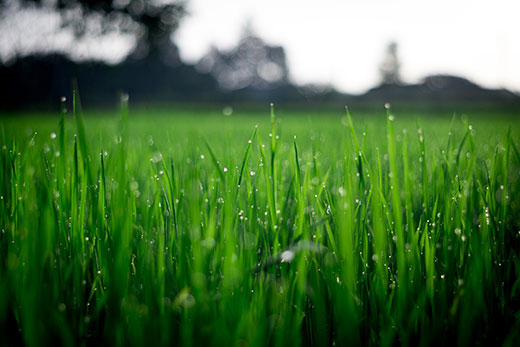Now’s the time to fertilize warm-season grasses in Kansas

Late spring, early summer applications are ideal, says K-State horticulture expert
It’s crunch time for homeowners and others who manage warm-season grasses in Kansas.
“Turfgrasses should be fertilized when they are actively growing,” said K-State horticulture instructor Cynthia Domenghini, who manages the university’s Horticulture Response Center. “For warm-season grasses, that time is here.”
Domenghini said late spring and early summer fertilizer applications are ideal for bermudagrass, buffalograss and zoysiagrass. Fertilizing too early, she said, does not help warm-season grasses, but rather encourages cool season weeds to grow.
“Northern and northwest Kansas can wait until May 30 or after to fertilize warm-season grasses,” Domenghini said. “Those in other areas of the state can fertilize beginning now (mid-May). Fertilizing too late in the season can increase the turfgrass’ vulnerability to winter damage.”
Domenghini said homeowners should avoid fertilizing warm-season turf with nitrogen after Aug. 15.
Some recommendations for fertilizing the three most common warm-season varieties include:
- Bermudagrass – Apply one pound of nitrogen per 1,000 square feet every four weeks.
- Zoysiagrass – Apply three-fourths pound of nitrogen in two applications: one in June and one in mid-July.
- Buffalograss – Nitrogen is not needed for its survival, but applying a nitrogen fertilizer will improve the color and density of the lawn. Apply one pound of nitrogen sometime between mid-May and early June. If a darker green is desired, follow the same fertilizer recommendations as zoysiagrass.
More information on fertilizing a warm-season lawn is available in the K-State Research and Extension publication, Fertilizing Kansas Lawns.
Domenghini and her colleagues in K-State’s Department of Horticulture and Natural Resources produce a weekly Horticulture Newsletter with tips for maintaining home landscapes and gardens. The newsletter is available to view online or can be delivered by email each week.
Interested persons can also send their garden and yard-related questions to Domenghini at [email protected], or contact your local K-State Research and Extension office.
Question of the Week
Can I mow my buffalograss lawn and spread the clippings on sparse areas to distribute seed rather than purchasing new seed?
Buffalograss has separate female and male flowers. The female (seed) flowers are nestled down within the grass. Male flowers (pollen) are high above the leaf blades and are the most visible. Mowing and bagging only collects leaf blades and male flowers. We know quality seed can be expensive, but for new grass to establish you’ll have to buy seed from the store.
— From the John C. Pair Horticulture Research and Extension Center



